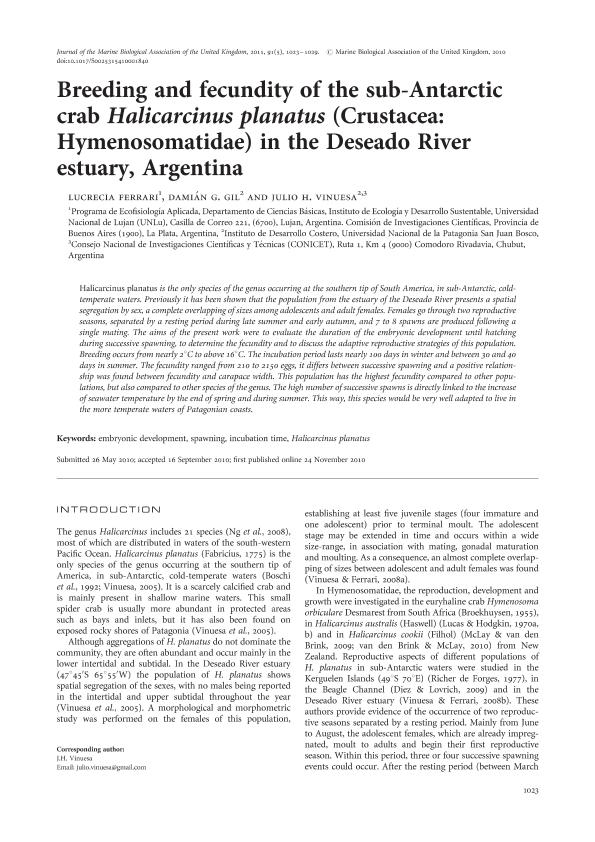Artículo
Breeding and fecundity of the sub-Antarctic crab Halicarcinus planatus (Crustacea: Hymenosomatidae) in the Deseado River estuary, Argentina
Fecha de publicación:
05/2011
Editorial:
Cambridge University Press
Revista:
Journal of the Marine Biological Association of the United Kingdom
ISSN:
0025-3154
Idioma:
Inglés
Tipo de recurso:
Artículo publicado
Clasificación temática:
Resumen
Halicarcinus planatus is the only species of the genus occurring at the southern tip of South America, in sub-Antarctic, cold-temperate waters. Previously it has been shown that the population from the estuary of the Deseado River presents a spatial segregation by sex, a complete overlapping of sizes among adolescents and adult females. Females go through two reproductive seasons, separated by a resting period during late summer and early autumn, and 7 to 8 spawns are produced following a single mating. The aims of the present work were to evaluate the duration of the embryonic development until hatching during successive spawning, to determine the fecundity and to discuss the adaptive reproductive strategies of this population. Breeding occurs from nearly 2°C to above 16°C. The incubation period lasts nearly 100 days in winter and between 30 and 40 days in summer. The fecundity ranged from 210 to 2150 eggs, it differs between successive spawning and a positive relationship was found between fecundity and carapace width. This population has the highest fecundity compared to other populations, but also compared to other species of the genus. The high number of successive spawns is directly linked to the increase of seawater temperature by the end of spring and during summer. This way, this species would be very well adapted to live in the more temperate waters of Patagonian coasts.
Palabras clave:
EMBRYONIC DEVELOPMENT
,
HALICARCINUS PLANATUS
,
INCUBATION TIME
,
SPAWNING
Archivos asociados
Licencia
Identificadores
Colecciones
Articulos(SEDE CENTRAL)
Articulos de SEDE CENTRAL
Articulos de SEDE CENTRAL
Citación
Ferrari, Lucrecia; Gil, Damian Gaspar; Vinuesa, Julio Hector; Breeding and fecundity of the sub-Antarctic crab Halicarcinus planatus (Crustacea: Hymenosomatidae) in the Deseado River estuary, Argentina; Cambridge University Press; Journal of the Marine Biological Association of the United Kingdom; 91; 5; 5-2011; 1023-1029
Compartir
Altmétricas




